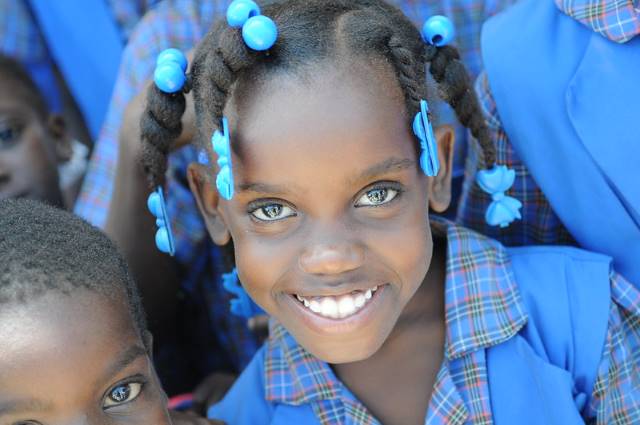How USAID Supports Accessible Education to Haiti
 Today, about 10% of the Haitian population struggles with one or more disabilities. This prevents them from receiving a proper education. Out of the 120,000 children in Haiti, only 3% of Haitian children have access to basic education. This is compounded by the fact that people are still struggling to rebuild their lives after Hurricane Matthew demolished most of Haiti’s infrastructure. There is hope, however, as USAID continues to offer support through developmental research. USAID also provides support for new programs dedicated to providing accessible education to Haiti.
Today, about 10% of the Haitian population struggles with one or more disabilities. This prevents them from receiving a proper education. Out of the 120,000 children in Haiti, only 3% of Haitian children have access to basic education. This is compounded by the fact that people are still struggling to rebuild their lives after Hurricane Matthew demolished most of Haiti’s infrastructure. There is hope, however, as USAID continues to offer support through developmental research. USAID also provides support for new programs dedicated to providing accessible education to Haiti.
Struggles in Haiti
Haitian people continue to suffer from the impacts of the many natural disasters that hit the nation. The country is in a constant state of development due to the frequency of natural disasters. Its location in the Caribbean makes Haiti a hotspot for flooding, earthquakes and hurricanes. Accessibility to education is seemingly unattainable for the Haitian population. This is due to the lack of funding to rebuild schools that lay in ruins. Furthermore, natural disasters increase the risk of cognitive and behavioral disabilities in those who survive, due to the trauma.
Children are the most at risk of developing disabilities due to the physically and mentally destructive effects of countless hurricanes. Between 1998 and 2018 Haiti experienced 10 hurricanes and other tropical storms. The countless calamities and damage often result in mental disorders such as post-traumatic stress disorder (PTSD). People with disabilities struggle to receive accessible education in Haiti as well as societal acceptance within their own communities. Additionally, studies show that for every 10,000 employees, four people have disabilities.
USAID’s PEER Program
USAID is working to bring more awareness to this issue in order to help provide more inclusive, quality education for children with disabilities. With the creation of Partnerships for Enhanced Engagement in Research (PEER) in 2011, USAID has been able to offer more support for approaching the issue. About $50 million has already gone toward the funding of more than 250 projects in more than 50 countries to re-evaluate the exclusivities of social ecosystems globally.
The PEER program partnered with the Initiative Group for the Study of Cognition, Language, Learning and Disorders (GIECLAT) to conduct a large-scale survey of the needs of students with disabilities in southern Haiti, areas gravely impacted by Hurricane Matthew. This effort also included the support of Haiti’s Ministry of Education through the Commission for School Adaptation and Social Support (CASAS), an organization led by disabled youth and other integral bodies.
The study indicates that learning disabilities and social and emotional difficulties are prevalent in schools. In several public schools surveyed, more than 50% of the learners displayed a form of a disability yet many of the educators reported no students with disabilities. Despite these findings on disabilities, few teachers received training on inclusive education and support services were lacking. The locally-led research project helped alter perceptions and spark change.
The Impact
USAID provided assistance to improve teacher-student dynamics. For the first time, Southern Haiti now has comprehensive information on learners with disabilities and their needs. Using this data, programs are underway to provide extensive training for inclusive education to teachers and principals.
Haiti’s Ministry of Education is also excited about the project. The research team published a book of the findings and recommendations for inclusive educational reforms. The PEER program is also helping to train professors and university students in inclusive education. Now, schools are adopting more inclusive pedagogies in order to provide accessible education.
Today, USAID has reformed almost 20 primary schools in Haiti to accommodate those with various learning disabilities. USAID provided disability awareness training to more than 660 teachers and principals. More than 62,000 community members also participated in disability awareness initiatives. As a result of these efforts, Haiti is beginning to see a brighter future of accessible education for all.
– Caroline Kratz
Photo: Flickr
